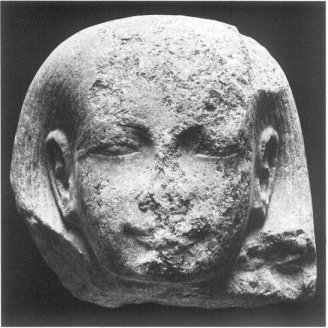|
The Temple "Kha-Akhet" in Thebes-West |
last update:
29.08.2010
|
| Several different sources indicate that Hatshepsut might built
at least three temples on the west bank of Thebes: 1. Djeser djeseru
- her temple at Deir el Bahari that includes the Valley
Temple of the same name built at the border to the green lands, 2. Djeser
set, the small temple of Amun, that is today part of Medinet Habu, and 3. a temple
called "Kha- Akhet (#a-AXt
= Hill on the horizon)", the site of which, however, was unknown. The temple Kha-Akhet is mentioned
twice on the Red Chapel, in a
foundation-deposit, that was found near to Deir el-Bahari, in a listing of temples in the
tomb of Pui-em-Re (Pwj-m-Ra), TT39, and also on the Northampton-Stela
found in the tomb of Djehuti.
|
| During the excavation season 1970 - 71, the Polish-Egyptian Mission
tried to install a pump to supply the water needed for the restoration of the temple of Hatshepsut, Djeser djeseru. A place was selected in the western part area of the called "Asasif"
beside a public well, which is situated between the mud brick pylon of the temple of Thutmosis
III,
called
"Hnat-anx" and the temple of the Ramses
IV at the foot of the causeway to Djeser djeseru.
|

| "Floor plan" of temple "Kha-Akhet (#a-AXt)"as
far as it could reconstructed by the finds (from:
Barakat, 1981) |
| However, the workmen who should clear up the area before the
set up up of the workstation, very soon found the base of a sandstone column. Further excavations 1970/71, 1971/72 and 1977/78 brought to
light numerous remainders of a temple, among them: sandstone column bases,
sandstone and mud-brick walls, other parts of a building as well as fragments
of a statue (Barakat, 1981). However, the building was badly preserved, since in
antiquity it had been frequently covered by the Nile flood - partly, the
pieces fell apart when touched. It was rather difficult to created as floor
plan (see above) and the owner could not be identified. Fragments of a statue (see below) and inscriptions
however, dated the building into the reign of Hatshepsut and/or Thutmosis III.
|
|
One fragment of statue could be assigned to a certain Kn-Imn, who was a royal
scribe of Thutmosis III, and another one to a scribe and a physician called Nb-Jmn.
It is possible that this is the same Nb-Jmn burried in tomb TT17 at Dra Abu el-Naga,
who had been scribe and "chief" physician under the reign of Amenhotep
II,
the successor of Thutmosis III.
|
In the few inscriptions which had survived cartouches with the names created of Thutmosis
I, II and III, could be identified. Those containing the names of Thutmosis I and
II were clearly recut.
In front of two cartouches containing the name of Thutmosis II still a feminine ending (t)
was partially visible, e.g. in a Sa(t) Ra - thus, the original inscriptions were
talking about the "Daughter of RA" instead of the "Son of RA".Finally,
during the season 1977-78 the base of a sandstone column was found in situ together with limestone fragments, on which still colored
bas relief were visible. Again, these fragments carried parts of cartouches:
recut cartouches of Thutmosis I and II an original one of Thutmosis III
- and one clearly of Hatshepsut!
|

| Besides other things the head shown above was found
in the temple area and might show Hatshepsut (photo: Barakat,
1981).
|
| Based on the inscriptions as well as on the site of the temple Barakat (1981) assumes that
this building could be the temple "Kha Akhet" built by Hatshepsut the site of
which had not been localized before.
|
|
Occasionally, objections were raised against this assumption. Brovarski (1976; quoted after Barakat) published the inscriptions of a
stela (the fragments of which are now in the Louvre and in the Oriental of Institute of the University of
Chicago) of Senenu, who carried the title of a "High priest of the Amun in Kha Akhet (#a-AXt)". Brovarski
himself identified #a-AXt with the central
sanctuary (the inner and outer room of the bark shrine) of Djeser djeseru.
|
|
However, there are some doubts regarding the identification by Brovarski,
because this would be the first time that parts of Djeser djeseru had been given
an own name - in a monument in which the valley temple located far away at the
border of the green land did not carry an own name!
|
|
Further information about this area were not available. Thus, is remains unclear whether further excavations
had been done or whether the assignment to Hatshepsut done by Barakat has been
proven false and filed away.
|
|

